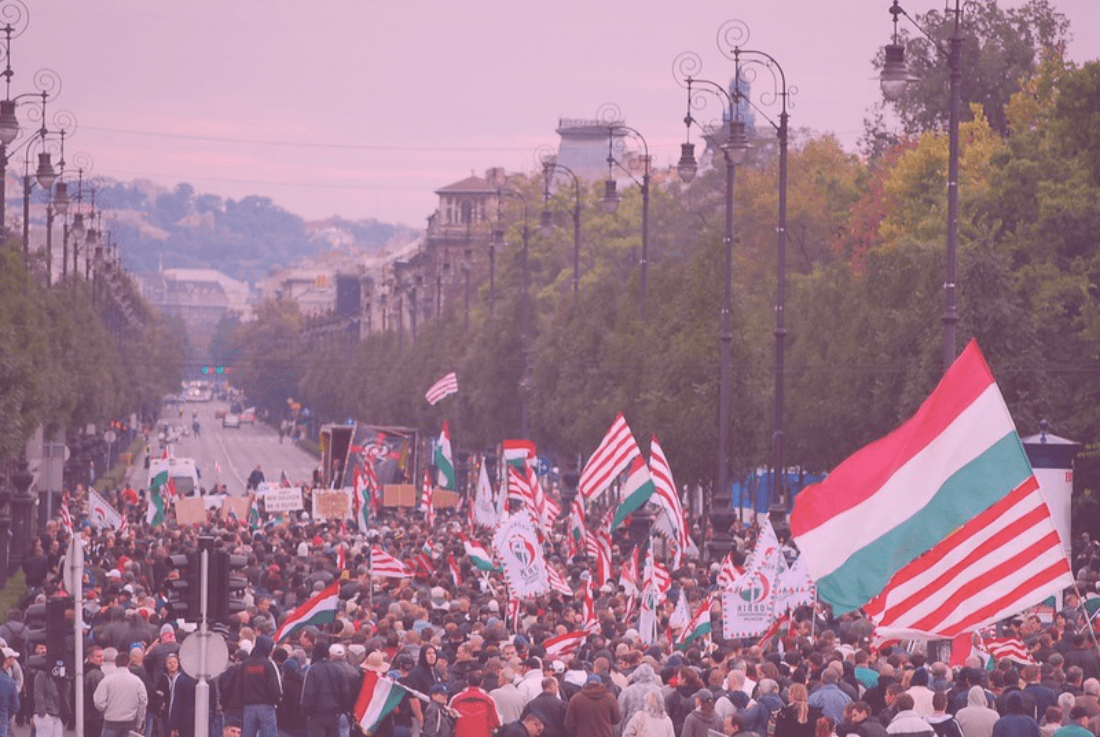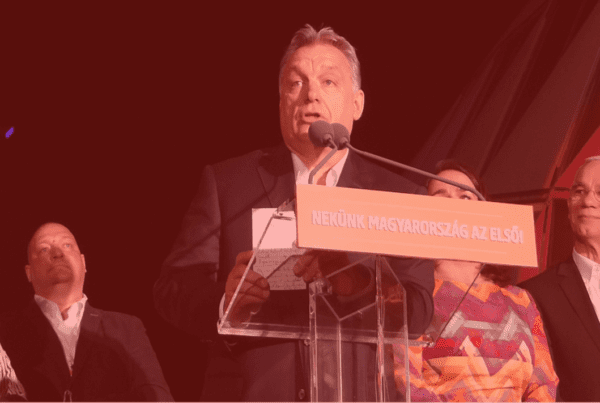Photo: “Hungarian Protest,” by John Murray licensed under CC BY-NC-SA 2.0. Hue is modified from the original.
Havasi, Virág. “Power and powerlessness of the civil society in Hungarian illiberal democracy between 2010–2022.” Politics in Central Europe 18, no. 4: 499-529.
Abstract
In the study we examine the pulling, pushing and pulling back factors and events that influenced civil activism in Hungary between 2010–2022, which was the period of the birth of illiberal democracy in the country. We describe – relying on newspaper reports – the most important events and campaigns in the given period and their effectiveness. In Hungary citizenship activity is at a low level, even within Central Europe. The viability of civil society is decreasing, especially in terms of financing opportunities, the legal environment, the image of the civil sphere, and ability to interest representation. We found that between 2010–2022 the presence of grievances as triggers was constant in the country, while the opportunity structures for action narrowed somewhat, but the illiberal Hungarian system is restrictive and not oppressive. There is a way to protest, to act in a different way, and actions do take place, but it is rarely possible to influence decision-makers – mostly in simple matters that affect everyone. However, social movements do not only fight for instrumental goals, but they also mobilise people, build organisations, contribute to self-development, form collective identity and (re)socialise the participants. These are important consequences even if the instrumental goals are not achieved.







